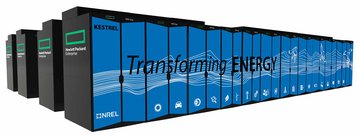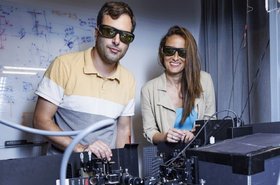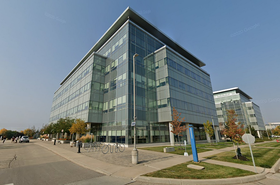Buildout of the 44 petaflops Kestrel supercomputer is now fully complete, and available for use.
Located at the National Renewable Energy Laboratory (NREL) Energy Systems Integration Facility (ESIF) data center in Golden, Colorado, Kestrel will complement the existing Eagle supercomputer providing more than five times the amount of computing power.
The system, first announced in December 2021, has been built by HPE and has now finished deploying GPU nodes.
Kestrel is now comprised of 132 GPU nodes, each with four Nvidia H100 GPU processors, and 2,314 CPU nodes each with two Intel Sapphire Rapids processors.
According to NREL, the GPU nodes - the latest addition - are already being used by more than 60 projects.
"The new Kestrel GPU nodes are proving to be extremely powerful—our project has developed algorithms that showcase Kestrel's impressive GPU acceleration for materials and chemistry modeling," said NREL's Derek Vigil-Fowler, principal investigator on the Beyond-DFT Electrochemistry with Accelerated and Solvated Techniques (BEAST) project, funded by DOE's Office of Science.
"We are leveraging the GPUs on Kestrel for high-fidelity simulation of electrocatalytic systems, with the aim of designing better catalysts for water electrolysis, fuel cells, and carbon dioxide reduction. The ability to simulate complex models of catalytic systems with high fidelity is invaluable to understanding factors that determine electrocatalytic performance, and Kestrel GPUs have demonstrated excellent efficiency and scaling for these simulations."
The initial 2,314 CPU nodes, along with a 95-petabyte parallel storage system, arrived in March 2023 and were deployed that summer, with access made available at the beginning of 2024. In the November 2023 Top500 list, Kestrel's CPU nodes landed at 67th place with 14.3 petaflops.
With a computing performance of 44 petaflops, Kestrel would currently rank 22nd.
The GPU nodes arrived at the site in February 2024, and integrated by May with early users able to test their codes. The system is now fully open to all Kestrel users.
"With Kestrel, researchers have access to advanced computing capabilities to do high-quality research at the pace and scale necessary to enable the energy transition," said NREL's Kristin Munch, laboratory program manager for advanced computing and Kestrel project manager. "We've been building to this moment for more than two years with a tremendous team working diligently to bring this impressive system online for EERE researchers."
The CPU nodes of the system use 100 percent direct liquid cooling for all components. Compared to its Eagle, Kestrel has more than twice the efficiency, providing 10.4 gigaflops per watt versus Eagle at 4.7 gigaflops per watt. The system is also connected to the warm-water waste heat recovery system currently used in NREL’s ESIF data center.







